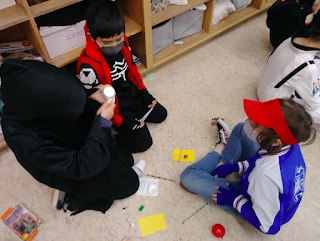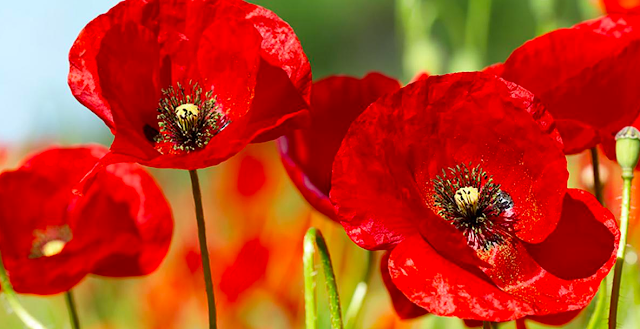We had a fabulous day yesterday at Ralph Klein Park. The weather was outstanding and the surroundings were beautiful. We had top-notch programming led by Chelsea from the City of Calgary. Here are some highlights of our learning and photos of the day.
In the morning, Chelsea asked us to tell her what a wetland is, what the parts of a wetland are (there are submerged plants, emerged plants and floating plants), and which different wetlands are found in Alberta (marsh, swamp, fen, bog). Some of this was review of what we learned in the fall and some was new information. Then, we played a game where we had wetland creatures taped to our backs and we had to ask Yes-No questions to figure out who we were.
That led us to talking about specific wetland invertebrates and their interesting adaptations. We played a simile game where we had items in a bag that were like a creature. We had to figure out what each item represented and share that with the class.
 |
A box of wood chips and leaves is like a caddisfly larva
because that's what they might make their home out of. Side Note: Google "Caddisfly jewelry! |
Next, Chelsea did a watersheds demonstration for us. This is a model of pollution and dirt erosion and how it's affecting our water source and our wetlands. What we did in this picture was talk about the different kinds of pollution, like leaking oil from vehicles, animal waste, litter, road salting, pesticides, and factory pollution. Then, Chelsea poured water on the town and we looked at how dirty the water was. This is the dark brown water container. Then, we "restored the wetlands" by adding sponges in the watershed, and made changes in the community to reduce the pollution. One example in real life is how the City of Calgary has switched to using some beet juice instead of salt to reduce ice on the roads. One amazing fact Chelsea taught us is that coyote scat can decompose in one week but dog waste can take 2-3 YEARS! That's because dogs eat food with preservatives compared to wild animals and it also has lots of diseases in it. The class liked that she used sprinkles and soya sauce in the demonstration (so that she was not pouring chemicals down the drain).
 |
| Notice the different colours of water! |
Chelsea took us on a walk around the Ralph Klein Park building. It's built ON the wetland! In this picture, we were watching the cliff swallow. They are just one animal who makes their home in this wetland. We also saw Canadian geese and their goslings, muskrat, yellow-headed blackbirds, red-winged blackbirds, and coot, as well as many fish.
 |
| Using the "Figure 8" technique. |
 |
| Putting the invertebrates into their "isolation chambers" |
 |
| Checking the list to see what we've caught |
Thanks to all of the parent volunteers who joined us; we had an awesomely educational day!














